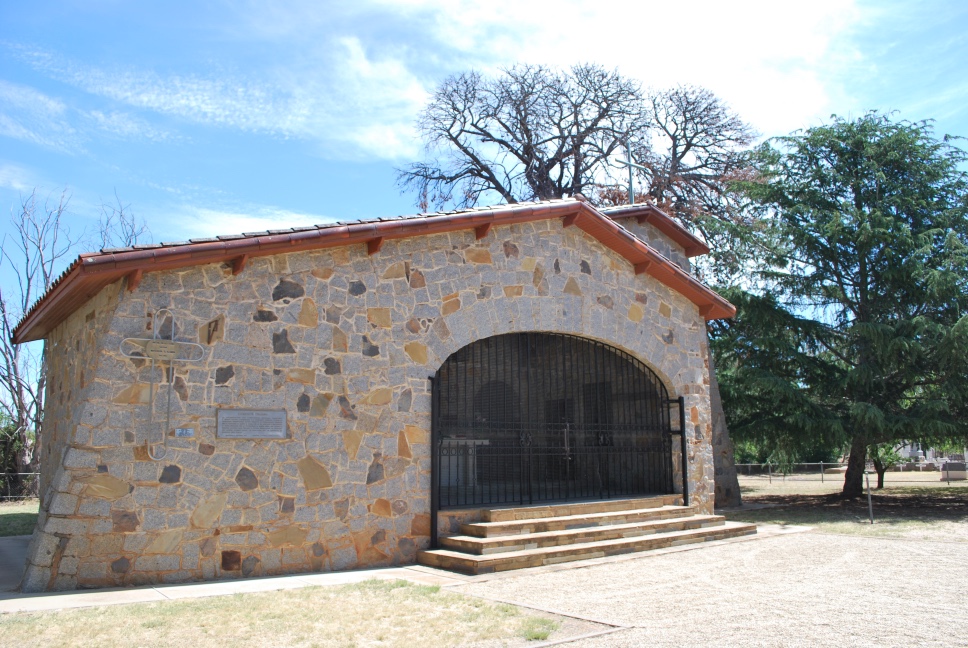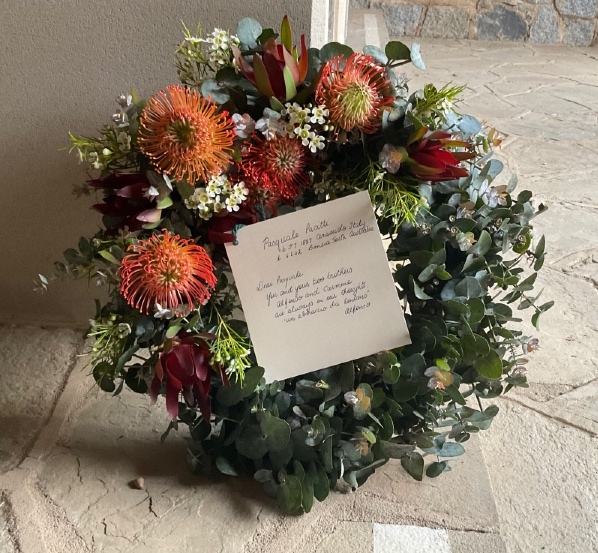Italian National Ossario Australia
Alfonso Pacitti
20 Dec, 2023
Deep in the heart of Victoria, some 150 kilometres north of Melbourne, in the small town of Murchison, is situated the Italian National Ossario.
From the Murchison Historical Society Website:
The Italian Ossario is a sacred place and is located in a peaceful setting in the south east corner of the Murchison Cemetery. The Italian word ‘ossario’ translated as ‘old bones’ is a place of final rest for human remains that have initially been buried elsewhere. The Ossario shelters Italian military Prisoners of War (POW’s) brought to our shores and Italian civilians, thought to be a security risk, who were both resident in Australia and allied territories overseas, and passed away during their imprisonment in Australia.
The “Ossario” mausoleum commemorates the Italian Prisoners of War and civilian internees from World War II who were interned in camps within Australia.
During the Second World War some 4,000 Italian, German and Japanese Prisoners of War and internees were detained n the vicinity of Murchison. Those who died at Murchison were buried in the local cemetery but floods in 1956 did major damage to the graves. Mr Luigi Gigliotti, a notable local community worker, persuaded Italian families living in the Goulburn Valley to pay for the building of the Ossario. He also persuaded the Authorities to reinter in the mausoleum all the Italians who died in Australian PoW and Internment camps.

The Ossario was completed in 1961 and designed by Victorian architect, Charles Hollinshed. It had to be rebuilt in 1966 due to further flood damage, it comprises Castlemaine stone with Roman roof tiles, a campanile and an altar of Italian marble.
Following the disastrous Goulburn River floods in the early 1970’s that inundated the crypt, the Victorian Health Commission ordered the caskets to be relocated above ground level. This required extensive alteration to the Ossario in 1974, with the addition of an area behind the sanctuary where the remains now rest. The crypt was then filled in with sand. A memorial on the right side of the forecourt created by Attilo Greco was installed in 1975, dedicated to the armed forces of Italy and funded by the Italian Government. The Ossario is approached by an avenue of Mediterranean Cypresses planted in 1989 each bearing the name of Italian Military Service Organizations.
It is a European oasis in the Australian bush-land, a little piece of Italy.
Each year, on Remembrance Day, mass is celebrated in their memory.
The local Murchison & District Historical Society is an invaluable source of information
to find out about the
Ossario and the annual ceremony.
A recent visitor to the Ossario was Joanne Tapiolas from Townsville, author of
‘Walking in their Boots – Italian Prisoners of War in Queensland 1943 – 1946’.
The remains of five internees, rescued from the Arandora Star, who died during their incarceration in Queensland, lie in the Ossario.

On 12 November 2023, Joanne placed some very beautiful wreathes on the monument in the forecourt, in memory of these five men.
This particular wreath, graciously placed on my behalf, commemorates Pasquale Pacitti, who was the younger brother of my Nonno Alfonso who perished when the Arandora Star was torpedoed in July 1940. Alfonso, his elder brother Carmine, and Pasquale were all onboard the Arandora Star when she sunk. Of the three brothers, only Pasquale survived.
Taken to Greenock, Pasquale was then re-embarked on the SS Dunera (along with some 460 other resued internees) and taken to internment camps at Tatura, just north of Murchison.
The inscription on the wreath reads:
Dear Pasquale,
You and your two brothers Alfonso and Carmine are always in our thoughts.
Un abbraccio da lontano.
Alfonso
Since publishing ‘Walking in their Boots’ in 2017, Joanne has continued to amass an enormous amount of further valuable research on the topic about Italians who were imprisoned in Australia during WW2. She has compiled unique records of these people whose story has, largely, not been told. The extent and thoroughness of her work is commendable.
The five Italian Internees from UK were:
- Michele Fagiano: born 26 June 1880 at Cherasco, Cuneo; died 29 January 1943
- Giulio Felloni: born 25 March 1905 at Metti, Bore, Parma: died 8 June 1940
- Pietro Lucchese: born 13 October 1907 at Bagni di Lucca, Lucca: died 27 April 1942
- Pietro Moscardini: born 6 January, 1905 at Barga, Lucca: died 18 January 1942
- Pasquale Pacitti: born 5 July 1889 at Cerasuolo, Filignano, Isernia: died 6 June 1942
For details of the other 125 Australian Internees and Italian PoWs, you can find them at Joanne Tapiolas' excellent website pages here . Reference articles: